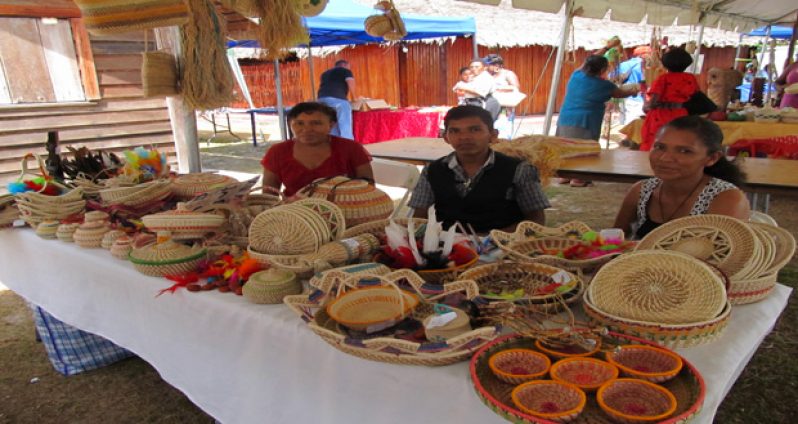INTENDED to promote and preserve Amerindian Culture in Guyana, Indigenous Heritage Month, which was birthed in 1995, has been described by a local Toshao as an initiative which is not fully achieving its intended purpose. And he called on the new government to find ways of revamping the activity so that it can make a bigger impact on Indigenous Peoples. The sentiment was expressed by Toshao of Moraikobai (Region 5), Colin Adrian, who lauded the efforts of local authorities to recognise the contributions of the Indigenous People to Guyana.
According to him, while the Amerindian Month initiative is one which provides some amount of marketing for local Amerindian products, which include art and craft, food, and fashion, it is not a long-term plan to combat the erosion of Amerindian Culture.
With globalisation rapidly shifting the socio-economic landscape of the world, Guyana, too, has fallen prey to these new adaptations, which contribute to the loss of traditional practices by indigenous groups.
Against this backdrop, Adrian reasoned that the one-month activity cannot be deemed, in his estimation, “too successful”, since there is a diversion from traditional practices within these Amerindian groups.
He offered, though, that this diversion allows for new avenues to be explored, and new systems to be adapted to combat this issue. Presently, the Toshao revealed, his community is working on a pilot project to revive the traditional language of the Arawaks, the Amerindian tribe which dominates his community. “We are hoping that this will take us somewhere in restoring an element of our culture which makes us distinct,” he said. Additionally, he underscored how critical the support from Central Government is, through the issuing of training schools or other facilities to lend support in this regard.
Meanwhile, another Toshao, Lenox Shuman, from St. Cuthbert’s Mission in Region 4 (Demerara-Mahaica), suggested that instead of having the event held for one month, it should be for nine days; one day for each of the nine Amerindian tribes in current existance in Guyana.
Shuman explained that this one-month event is used as an escape route for many who refuse to work during this time, and say: “This is my month; I don’t have to work.” The Toshao said this has had negative effects on the communities, through the loss of labour. “This puts families and communities at a disadvantage, since the production rate drops,” he said. He maintained, however, that this is not a sweeping generalisation, as many still remain committed to their work during this time. He however, suggested that instead of having one month of activities, nine days should be set aside during the month, for each tribe to present and promote their cultural diversity and uniqueness.
This year, Amerindian Heritage Month, or Indigenous Month as it is now called, is being celebrated under the theme, “Preserving our Customs and Traditions”. Santa Aratak in Region 3 has been chosen as the Amerindian Village of this year.
In additional to cultural exhibitions and performances which are being held across the country, the Indigenous People’s Affairs Ministry has revealed that a series of school lectures will form part of this year’s celebration. This initiative which will be held at various schools across the country, will seek to sensitise students on the way of life of the Amerindians and their diverse culture. Amerindian Heritage Month has its beginnings in Amerindian commemorations of 10 September 1957 – the day on which Stephen Campbell became Guyana’s first Amerindian Member of Parliament (MP). On 10 September 1995, Guyana’s President at that time, Cheddi Jagan, officially designated September as Amerindian Heritage Month.
By Ravin Singh


.jpg)











